How are Today’s Chickens Bred?
It is a fact that today’s chickens grow bigger and faster than the chickens from years past. It is also a fact that today’s chickens are healthier, more affordable, and feeding more people than ever before.
When comparing chickens from different decades these changes can seem drastic, and they often lead to questions asking how this progress is possible, if it is natural, and if these changes are causing stress or harm to the chickens under our care.
First, it is critical to address that chicken you buy is never given added hormones or steroids. In fact, the use of such added or artificial hormones is forbidden by law by the FDA. Hormones or steroids are never given to our birds, and therefore have no impact on the size, health and wellbeing of the chicken you feed your families.
Similarly, there are no genetically modified (GMO) chickens in the food chain.
So how is the chicken industry raising bigger, healthier birds on such large scale? The answer is surprisingly simple – traditional breeding.
What is Traditional Breeding?
Today’s birds are given optimal nutrition, veterinary care and better living conditions, but perhaps most importantly the chicken industry has modernized and improved the science of traditional chicken breeding.
For centuries farmers and ranchers have improved the genetic lines of their herds and flocks by selectively mating the healthiest and strongest animals with each other to produce a stronger line of offspring. This traditional breeding process is at the heart of animal husbandry, and it allows for small improvements in size, strength, growth rates and health in each generation of the herds and flocks.
The most critical part of this breeding process is identifying which animals are the strongest and healthiest – and therefore should be bred together.
Traditionally, farmers have relied on observational data like weight, feel, and appearance to determine the health and performance of the birds. These techniques often missed underlying traits not easily measured by sensory observation – things like heart health, susceptibility to disease, bone density, joint health and other potential underlying genetic conditions.
Today, scientists work hand in hand with farmers and veterinarians to identify the best birds to breed, improving both the health and size of the next generation of chickens. Incredible advancements made in DNA mapping and animal health diagnostic tools over the last few decades provide today’s breeders with access to an abundance of data regarding the health and genetics of the birds under their care so they can determine which birds will be best to breed.
So how does it all work?
Here is an overview of the modern chicken breeding process:
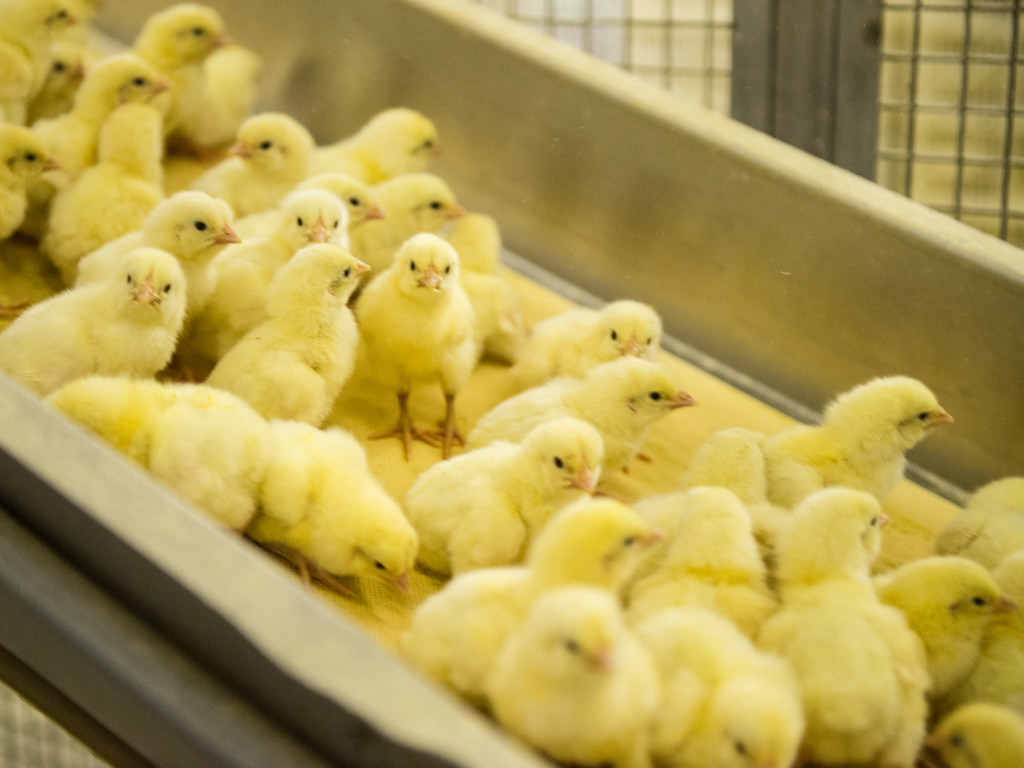
Step 1 – Hatching
The day a new generation of birds are hatched in a hatchery on a top breeder farm, they are fitted with a unique ID tag so farmers and scientists can closely monitor and track their health, size and growth rate. After hatching and individual identification with their wing tag, the birds are raised in the same temperature-controlled environment as their counterparts on broiler farms to ensure their health and growth rates can be measured under typical farm conditions.
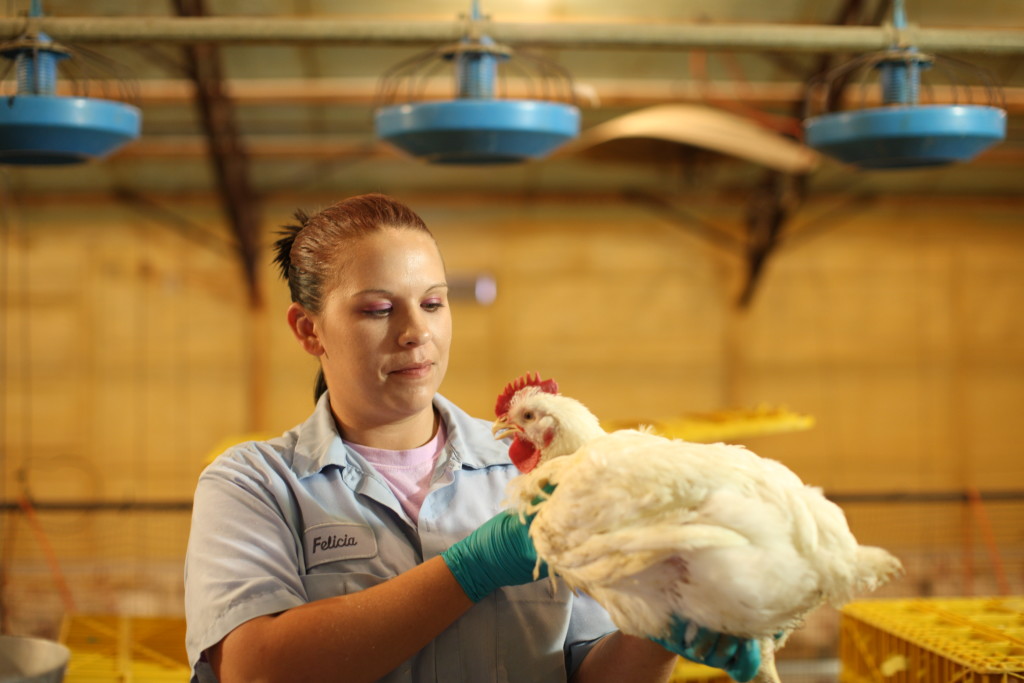
Step 2 – Health Exam
Once the breeder farm birds are between six and seven weeks old, the age when a standard broiler chicken would go to market, we begin looking at the same observational data farmers have traditionally relied on: feel, weight, observable health, etc. These observations are then computed along with the genetic history of the bird, and a computer calculation determines the strongest and healthiest birds from each flock. Roughly 2,000 birds from each elite breeder flock will go on to the next stage of health screening; the rest are sent to market.
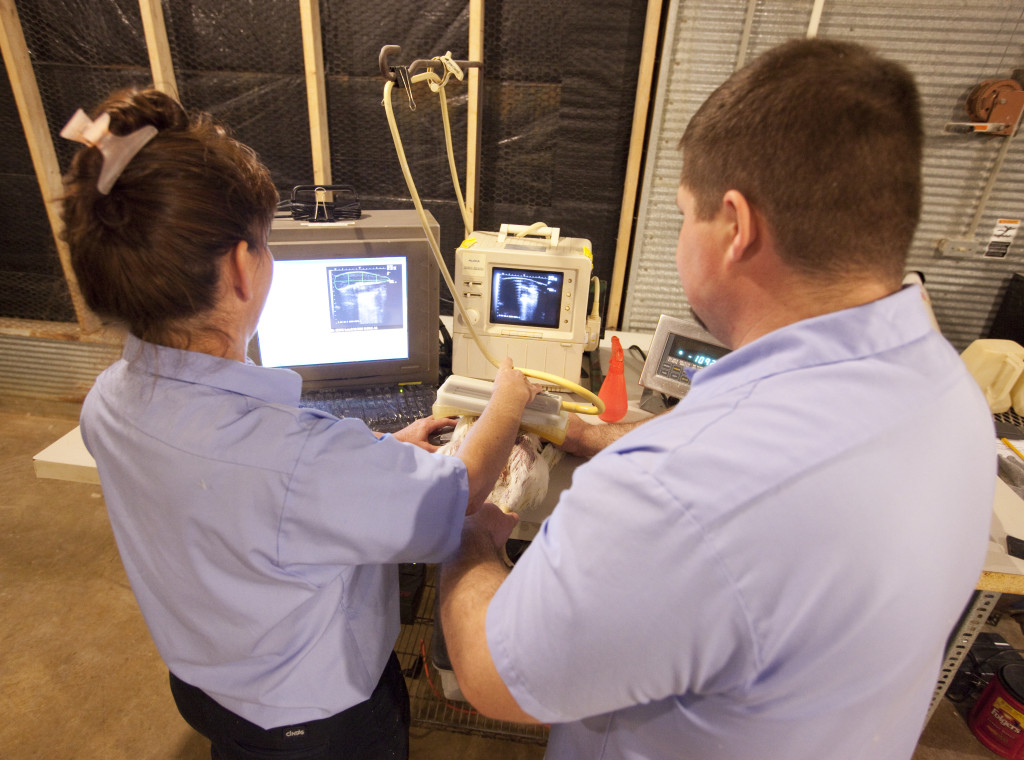
Step 3 – Health Screening
The birds next go through a medically advanced screening process to ensure the healthiest and strongest go on to create the next generation of chickens. Selection for health and welfare traits is important not only to animal welfare but also to improve husbandry. This screening includes:
- A DNA test to check any genetic disorders down the line
- A blood oxygen level test to ensure heart and lung health
- An ultrasound station to examine the birds’ breast muscles.
- An x-ray of the bird’s joints, to look at the bone formation and joints of each bird to have a precise evaluation of leg health. Leg and joint health are important traits to improve over each generation, as birds need strong legs and joints in order to easily access their feed and water and grow to their full potential. It is important that the birds can move around comfortably, therefore leg and joint health are of critical importance.
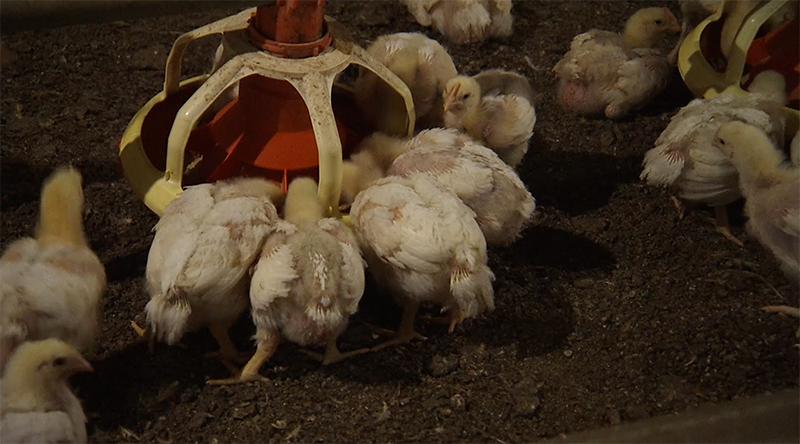
Step 4 – Feed Conversion Test
The birds then move on to a feed conversion test for the next week. In the feed conversion test we give the bird’s full access to water and a determined amount of feed. We weigh the birds and the feed at the beginning of the week and we weigh them each again at the end of the week. The goal is to determine which birds gain weight most efficiently. A generation of birds with more efficient feed conversion rates means a generation of birds with a smaller impact on the environment. A feed conversion test allows breeders to determine which birds will maximize the food they eat to grow healthy and strong. This test is a key component to the sustainability of chicken industry.
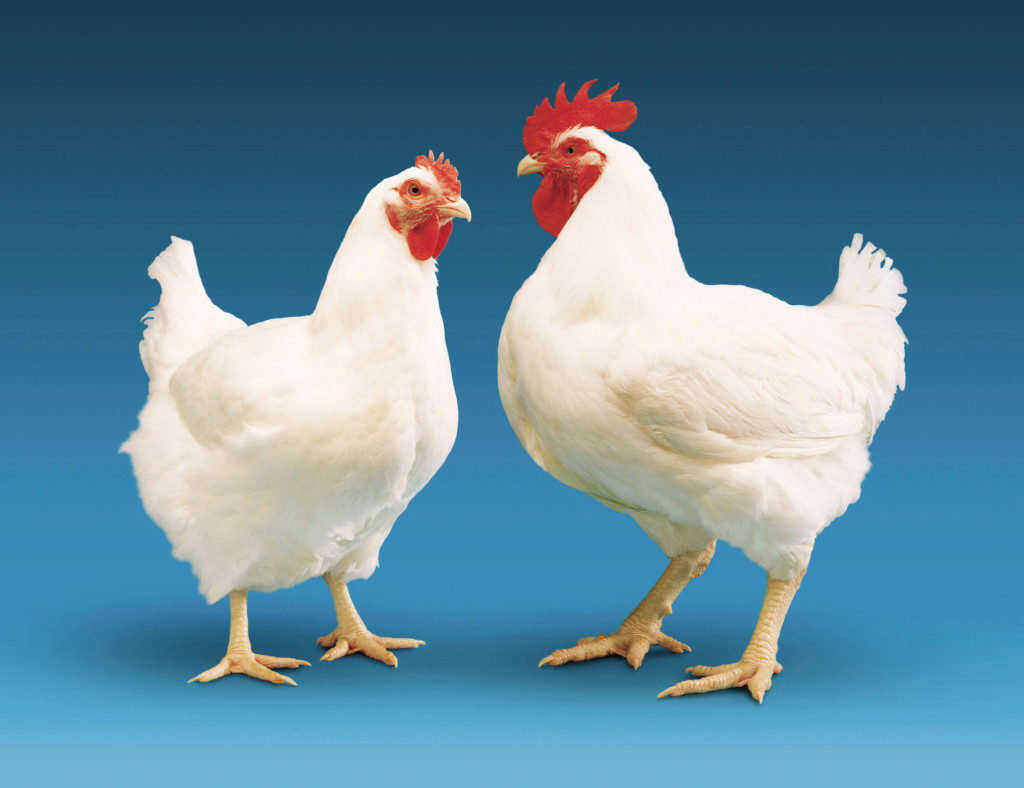
Step 5 – Mating
At the end of the process, about 300 birds with the strongest genes are kept on the top breeder farm and are allowed to mate naturally and independently – creating the next generation of pureline breeding stock that are used to start the process all over again. The other birds that have been screened, which still represent some of the healthiest and genetically superior birds to date, are kept on the breeding farm to mate and begin the process of building the flocks that will eventually be sent to family farms to be raised and sent to market.
The approach to chicken breeding is the same as it was hundreds of years ago with a focus on selecting the best birds from each flock. But today’s breeding farms are equipped with the right technologies to create continuous small improvements in each generation. The result of decades of breeding and thousands of generations of birds is the larger and healthier birds that you see today. So, yes today’s chickens are bigger and grow faster than their ancestors. However, through this highly technical and closely monitored traditional breeding process, we also ensure today’s birds are stronger and healthier than ever before.
ADDITIONAL INFORMATION
Aviagen, Cobb-Vantress and Hubbard are the world’s largest chicken breeding companies. Learn more about them and their commitments to animal welfare:
